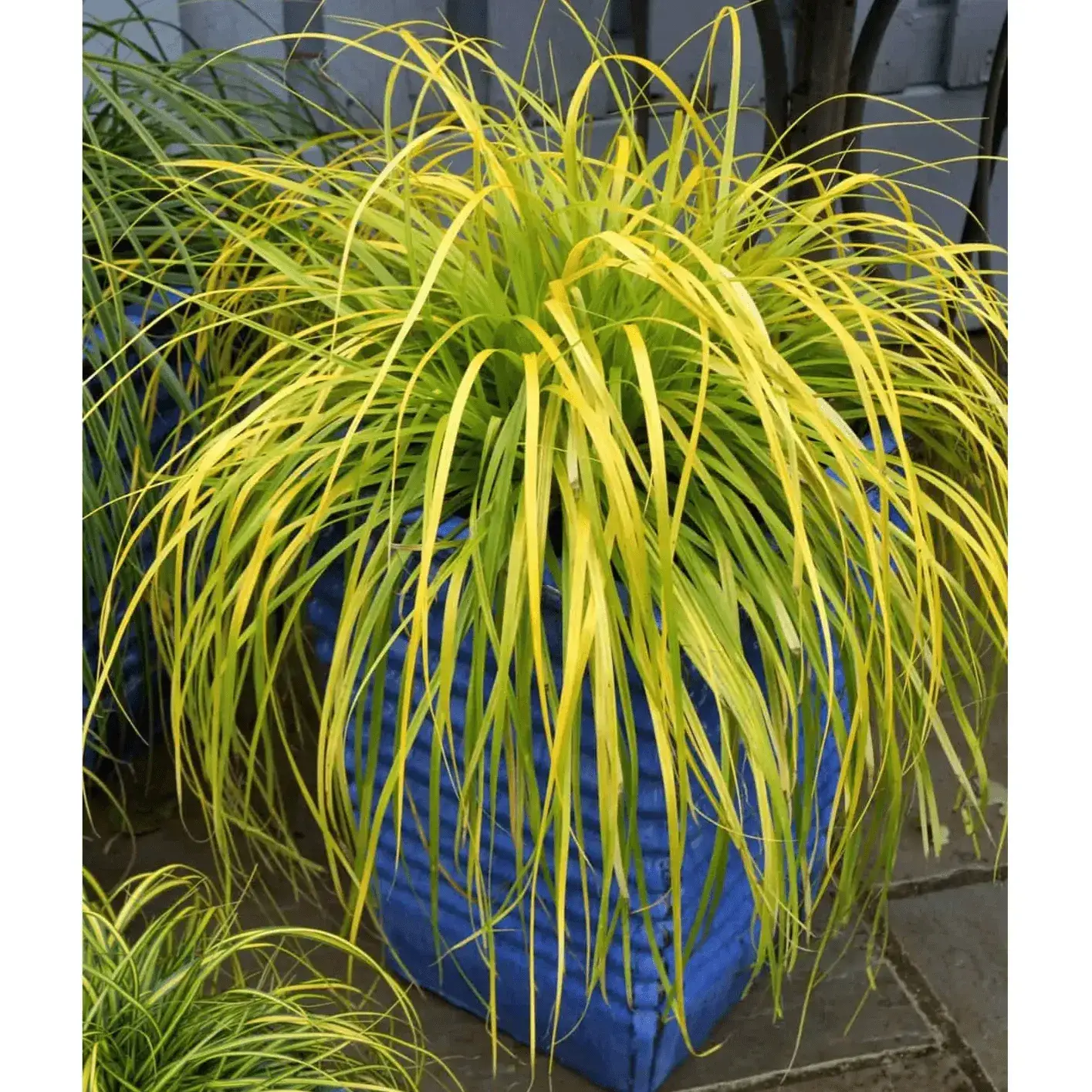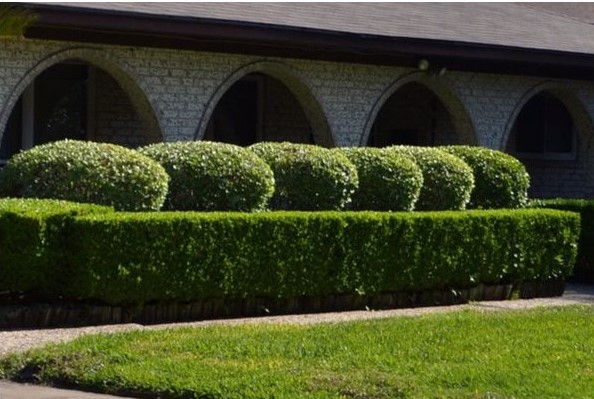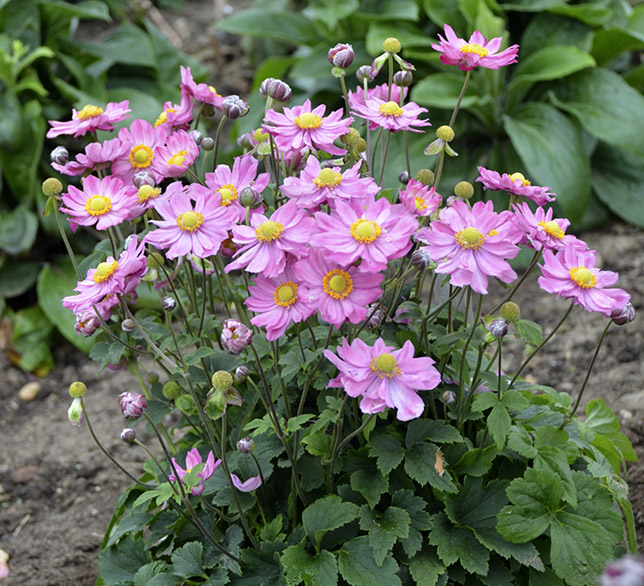
Carex and the Family of Sedges
While some species may be used for specialty paper and baskets, for gardeners interest lies primarily in their beauty, ease of maintenance and long-lived durability.
Obviously, not all Carex sedges reach the marketplace. Of the 1000 or so that comprise the genus, perhaps 100 have ornamental value for the garden. Many of these have their origins in wet or moist habitats located in temperate zones around the world and are easily adaptable to the American garden.

Beneficial Characteristics
- Do well in both sun and shade
- May be clumping or slowly rhizomatous - generally well-behaved and will not impinge on their garden neighbors
- Drought tolerant
- Forgiving of soil conditions
- Many adaptable native species make them an ecologically appropriate substitute for other types of plants
- Seeds provide food for birds and small animals
- Usually deer resistant
- Evergreen cultivars provide 4 season interest
And if that isn’t enough to whet a gardener’s appetite and interest, the fact that they come in varying shapes, sizes, and colors adds up to a plant that definitely deserves some consideration for your landscape. Selections under cultivation originate from all over the globe - Japan, Europe and Asia, China, Africa, North America and New Zealand - all offering something distinct and worthy of consideration in the garden.
Taking a Closer Look
Color (see photos below)
For color, choices include all shades of green – pale, light, medium, dark - glaucous blues, brilliant and creamy yellows, copper and bronze, and numerous variegated leaf colors. There is even a green selection so light in color it appears silver, a lovely cascading flow of shimmering silver known as Carex albula ‘Frosted Curls’ or ‘Frosty Curls’.
The Blues: Carex flacca, Carex flaccosperma, and Carex nigra offer variable heights from 6 inches to 2 feet high. Shown below is Carex flacca 'Blue Zinger', a 12-inch high cultivar which looks wonderful in pots as well as loosely mounded in the garden. Carex flaccosperma has green atop and blue below the slightly wider 5/8 inch leaf, forming loose tussocks. Carex nigra is a blue with a black stigma, not too showy, but some appreciate the nuance.
The Yellows: If it's yellow you are looking for, one cannot find a better choice than Carex elata ‘Aurea’, or Bowles Golden sedge (shown below), with its bright gold leaves thinly margined in green. Despite having found its shallowly submerged niche in the well-appointed water garden, it will do just as well in average soil as long as it remains moist. Sun brings out an intense yellow hue in its graceful 2 ½ foot high semi-evergreen foliage.
The Browns: New Zealand reigns supreme for introducing copper, brown and bronze foliage to US gardens, including C. buchananii with its 2 foot high tufted vertical growth, C. flagellifera, similar to buchananii but less vertical and a little softer in the landscape, and C. comans ('Bronco' shown below) with a flowing mop of finely textured foliage. Both are stunning if contrasted with silver or blue foliage or brighter floral touches, but take care to visually separate them from bare soil or mulch which siphons the life from their color and unique form.
The Oranges: New Zealand can also claim first introducing the color orange with Carex testaceae ('Prairie Fire' pictured below), a slender leafed sedge 15 inches in height that colors up with vivid orange highlights in cooler weather.
Variegated leaf forms: Thanks to Japan’s interest and fascination in all things variegated, selections are available to suit all gardening tastes. A workhorse in the garden since its introduction in the mid-1800’s is the fully green morrowii, from which beautiful green centered and white or creamy margined cultivars including ‘Gilt’, ‘Ice Dance’ (pictured below), and ‘Gold Band’ have been created. For an even more refined choice, there is the aptly named morrowii var. temnolepsis ‘Silk Tassel’, which forms a fountain of finely textured foliage with its 1/8 inch leaf of dark green edges and clear white center.
In considering the best use of the landscape’s physical and visual real estate, plant size makes a difference. Carex sedges accommodate large and small garden areas with sizes ranging from a petite 4 inches in height to 5 feet tall and wide.
Rock Gardens:
As size sometimes predisposes use or suitability for function, those sedges with diminutive proportions and well behaved habits are perfectly suited to the rock garden.
- Carex petriei, a vertical dwarf copper- bronze New Zealand choice with curling tips much like a small buchananii, tops out at 8 inches
- Carex ornithopoda - little tufts of solid green
- C. ornithopoda ‘Variegata’, bird’s foot sedge - striped white, 8 inches high
- Carex firma - blue-green or variegated form with a more diminutive statuesque 4-inch high tufts
Mowable Sedges for Lawns and Meadow Gardens:
Short mowable sedges with more spreading growth are being used ever more often as lawn substitutes. Since Americans still love their grassy lawns, the fact that individual plants are barely indistinguishable (looking more lawn-like) is a plus. These also lend themselves beautifully to meadow gardens and natural plantings, blending seamlessly with native perennials and wildflowers and tolerating needed maintenance mowing.
- Carex pansa and Carex tumulicola are being used to replace turf in dry areas such as California
- Carex woodii - Wood's sedge - densely matting spreading variety with blue-green spring foliage maturing to green, shade tolerant
- Carex eburnea - Bristle-Leaf Sedge - similar texture to fine fescue; tolerant of dry sites
- Carex socialis - Low Woodland Sedge - clumping variety with vigor vastly improved by biweekly mowing during summer
- Carex pensylvanica - Pennsylvania sedge - mowable 8-inch sedge in a soft, uniform green used as a resilient lawn alternative in both dry sunny and shady sites in the mid-Atlantic region and northward
- Carex pensylvanica 'Straw Hat' - slower spreading cultivar of the species with exceptional inflorescence display
Bog and Rain Gardens and Wet Sites:
Many of our native species are found in damp or occasionally flooded areas, making them a sensible choice for moist to wet sites. This also introduces a texture not often found in other rain garden or bog plants.
- Carex muskingumensis- palm sedge, 2-3 ft tall
- Carex crinita - 4 ft tall
- Carex stricta
More substantive leafed and larger sedges are suited to almost any function other than lawn or rock garden. They can be employed as accent plants in pot or in ground, as groundcovers, or as specimen plantings. A few interesting choices for planters include Carex comans 'Amazon Mist' (photo below), which almost demands a raised container to show off its slender and silvery leafed cascading form, or perhaps the 2 foot high Carex nudata from Northern California, a dense tussock of green foliage with strikingly black ornamental flowers arching over the foliage in late winter and early spring. If in the ground instead, the 8 inch high evergreen plantain leaf of Carex plantaginea will amass to form a perfect foil to ferns. Another choice, Carex muskingumensis, forms a wonderful 2-foot high palm-like massed groundcover and acts as a backdrop for more relaxed, prone plantings.
Architectural Interest
A look at this interesting genus would not be complete without addressing its use as an architectural element in the garden. The form of many of the sedges are tussocked and tufted and, as already mentioned, sized to accommodate any design. This somewhat unusual growth habit alone adds to a garden’s interest. Some of the tufted shapes will also have curling on the very tips of the leaves, some will be more upright, some cascading in soft mounds (Carex morrowii var. temnolepsis comes immediately to mind here), further enhancing the visual interest.
The large, 2-foot bronze mounds of Carex comans are quite striking with their pendulous mops of fine foliage. All sedges are not created equal in this regard, however. A few more of the many outstanding forms should be mentioned here for their architectural boldness.
For an unusual and interesting shape there is Carex phyllocephala ‘Sparkler’ (shown below) displaying cane-like stems in whorled clusters up to 2 feet high, the variegated leaves widely margined in cream making the plant look almost white. It is a plant that causes passersby to stop and examine. Another interesting shape is native Carex muskingumensis with 2-foot tall upright branches resembling miniature palms. The cultivar 'Oehme' is one of the few known variegated native Carex, and the miniature 'Little Midge' (pictured below) proves a fascinating addition to containers or border edges . Massed or in specimen solitude, taller sedges such as 4-foot high native Carex crinata, with its arching stemmed summer inflorescences and graceful wafting in the breeze, draw attention in the larger landscape.
Many are evergreen, needing only a clean-up or cutback to refresh in the spring. Some of the best of these belong to the 'Ever' series which offers narrow foliage linearly banded with varying shades and amounts of green, yellow, or white ('Everillo' and 'Everoro' shown below). Softly cascading, mounding habits with sizes ranging from 12 to 18 inches make them a unique spiller for container gardens and a striking accent for beds and borders where year-round interest is needed.
For the home gardener, a garden may be simply a pot with an interesting plant on the back patio or an acreage of untamed beauty surrounding planting beds and human-tended plantings as the landscape approaches the home site. Carex sedges are at home in either and offer tremendous variation in height and spread, color, texture, leaf form, and growth habit. The gardener has but to weave the common thread of a chosen sedge color and form through the garden to create a visual flow of interest.
Plant Size and Function
A Garden Vision
This author, for example, loves blues and incorporates plants that echo that – Carex flacca ‘Blue Zinger’ spilling around a Korean spice bush and repeated up the path as it approaches a Nippon daisy, then a little further on arriving at the interesting form of a bluish rue among some pink chrysanthemums, all playing against a background of blue Boulevard cypress. The ‘Blue Zinger’ sedge invites the eye to travel along the path, exploring and reveling in the mix of textures and gentle colors.
And isn’t that what gardening invites us to do? So enjoy, explore, and select an architecturally interesting Carex for your garden. You won’t be disappointed.














